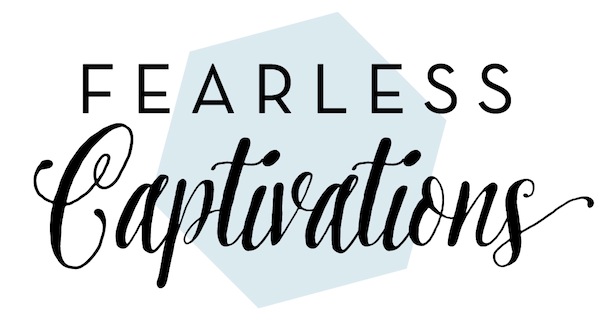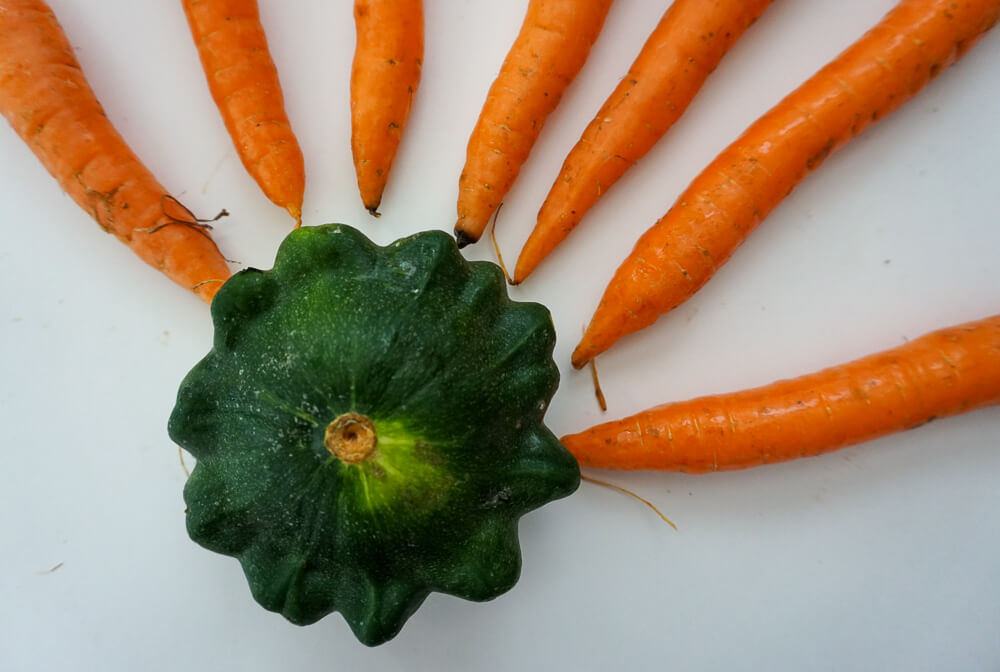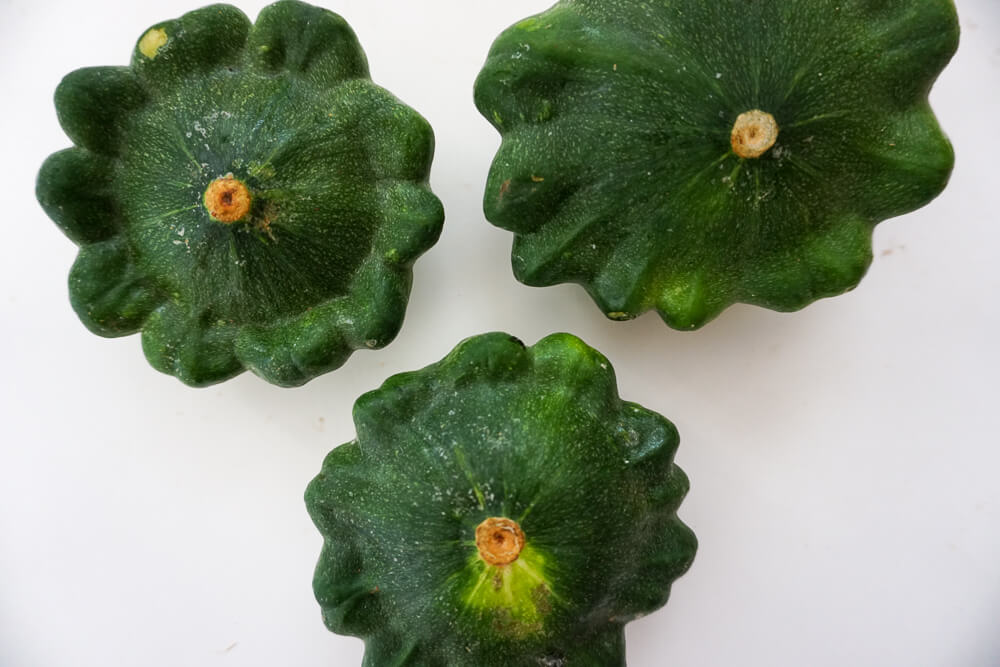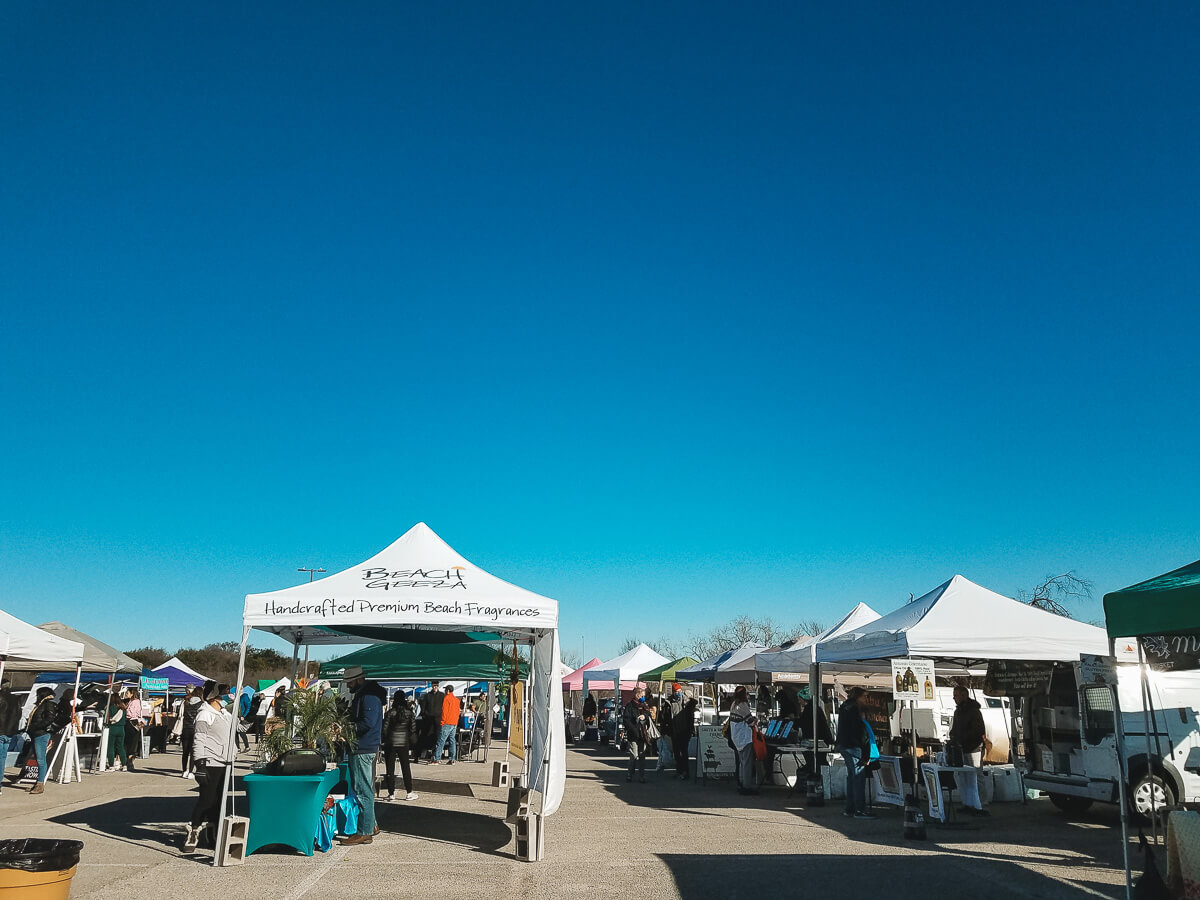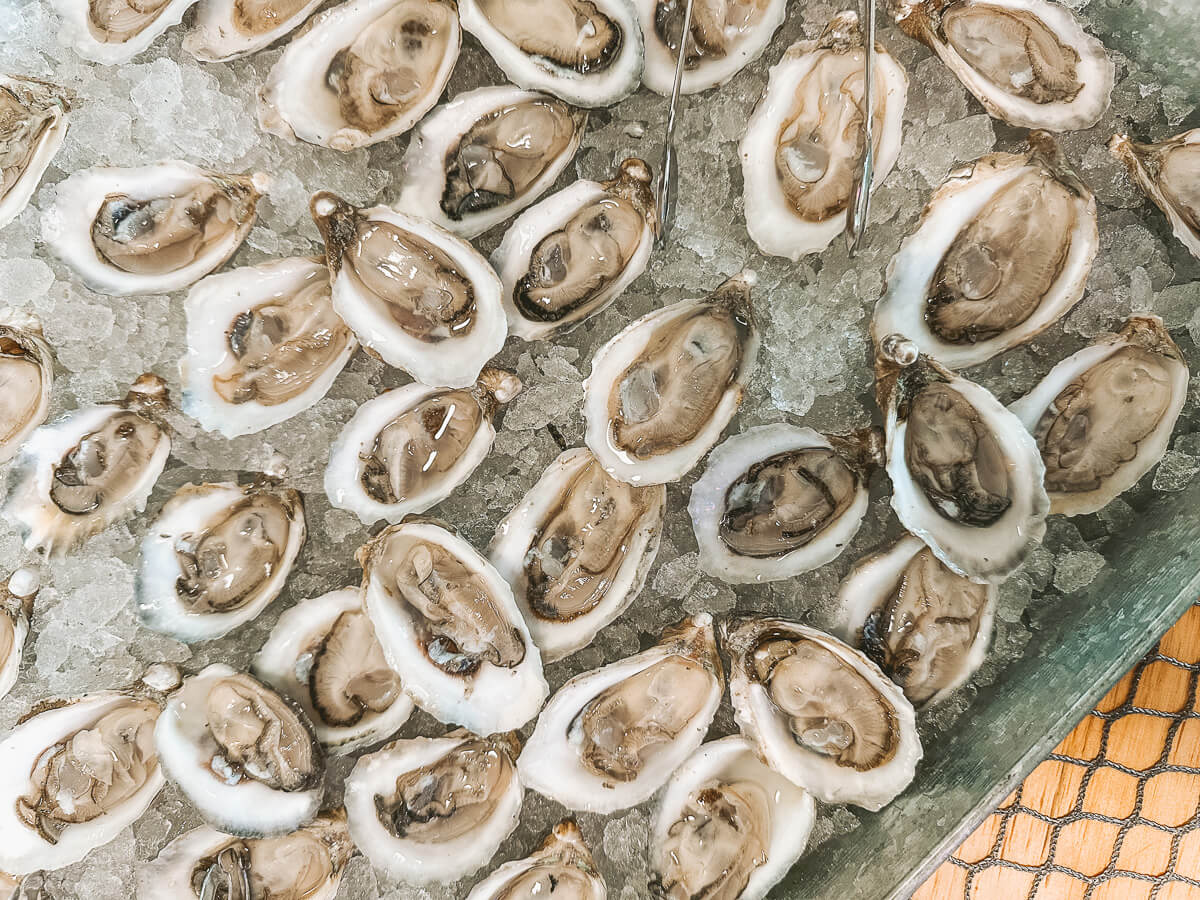This year, I’m taking on a farm-to-table, #localmonthly challenge where I eat local, home-cooked meals for one day every month. All ingredients from these meals are from Texas. (See the first post here.)

This month, I suited up and learned all about bees and their hives! I was a bit familiar with bees and honey. I took a hive tour with Round Rock Honey about eight years ago and went to this fun honey event about four years ago. Visiting Two Hives Honey was the perfect refresher as part of my farm-to-table challenge.
Two Hives Honey
Two Hives Honey is a local Austin company providing honey, hive tours, and beekeeping classes. Their hives are located on the land of Texas Keeper Cider, one of Austin’s cideries.
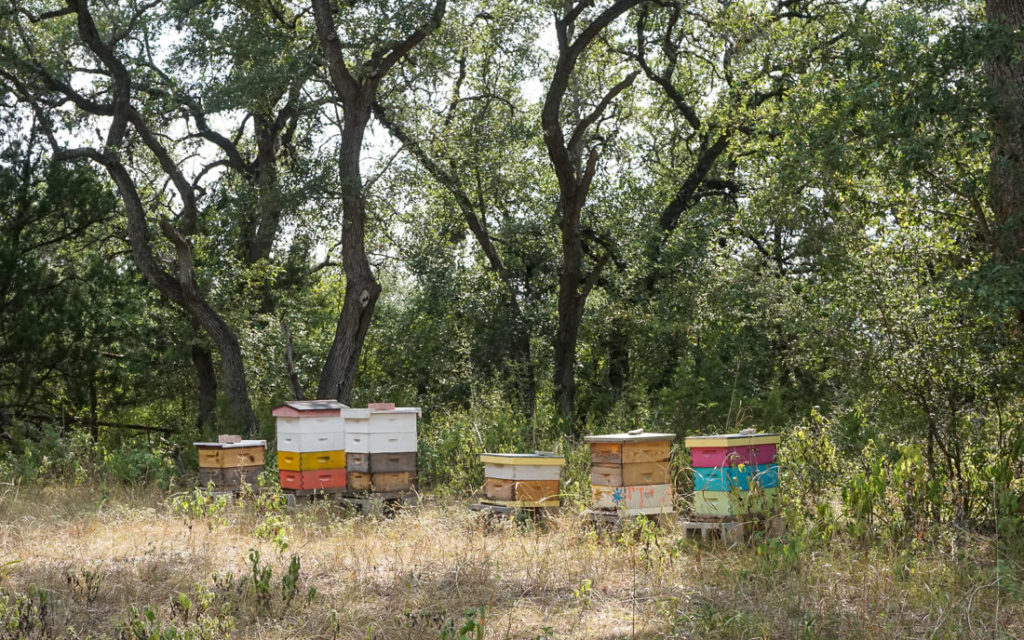
For our hour and a half long tour, we learned a lot about bees! They are so fascinating. Here are some of the things:
- The history of honey goes back to ancient Egypt. Honey bees can be seen on hieroglyphics and pots of honey have been found in tombs.
- Honey bees aren’t native to the Americas. They were brought by European settlers in the 1600s. Now, 4,000 species of native bees live in the U.S.
- Honey bees will visit two million flowers to make one pound of honey.
- There are three types of bees in a hive. One queen, female workers, and male drones. Workers do everything from foraging, cleaning, and feeding.
- A queen bee typically lives three years.
- The drones’ job is to mate with a queen bee, but they usually do not mate with the queen in their own hive. They fly to a drone congregation area. Mating lasts for less than five seconds and then the drone DIES! Drones usually live about 90 days.
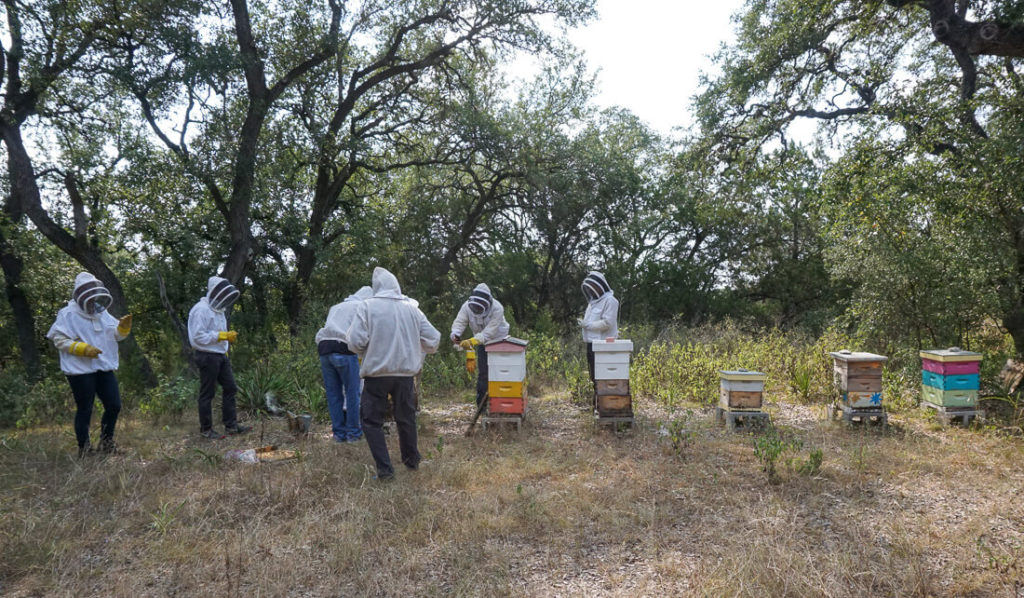

After we learned about bees, we got into our protective jackets and gloves and got very close to more than 100,000 bees! A smoker was used to calm the bees down. If a smoker isn’t used, the bees would send out alarm pheromones.
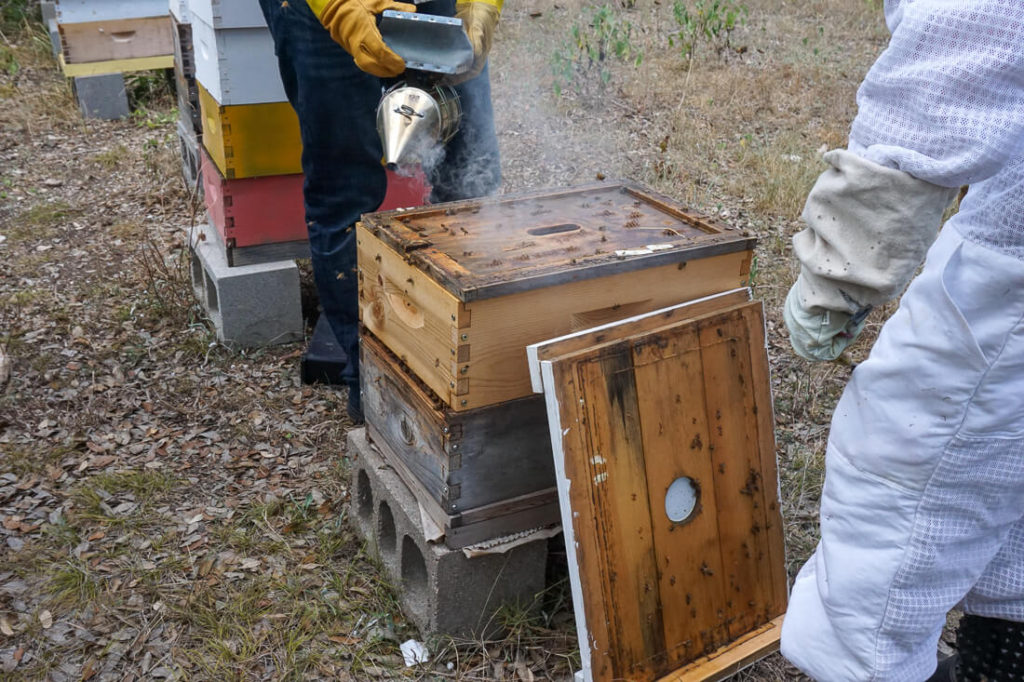

Can you believe this honeycomb is all made by bees? There is no wiring holding this up.
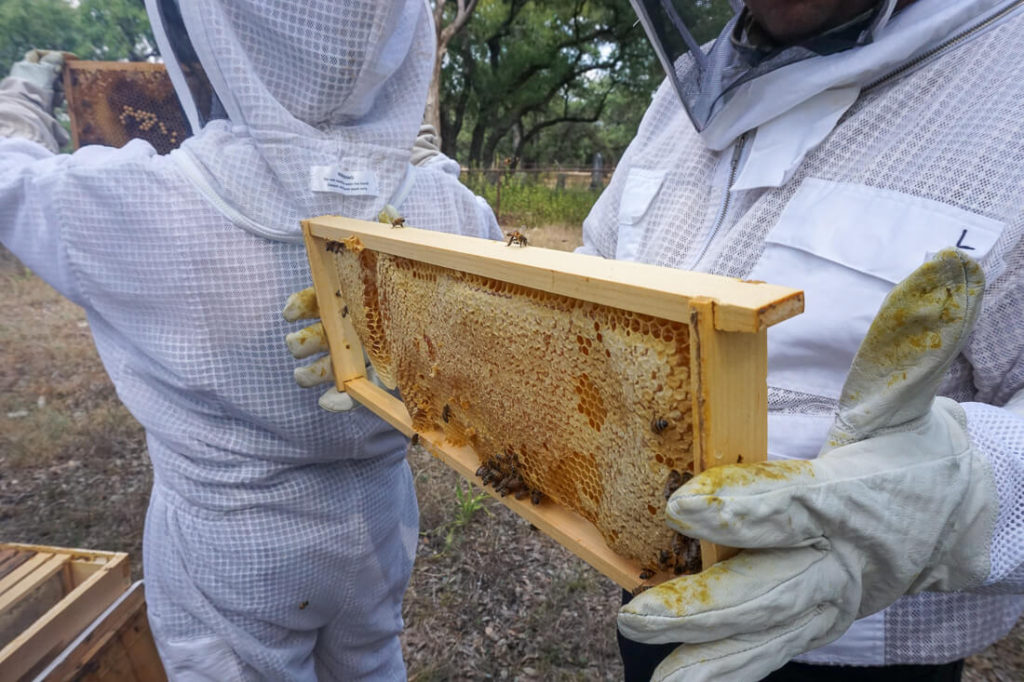
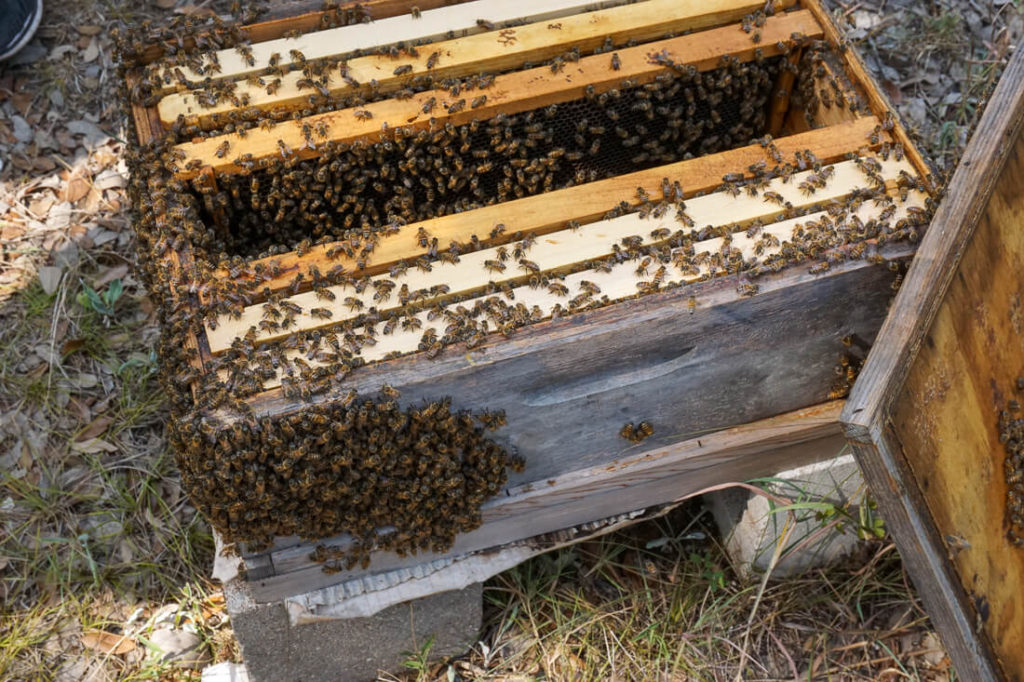
We even got a little taste straight from the hive!
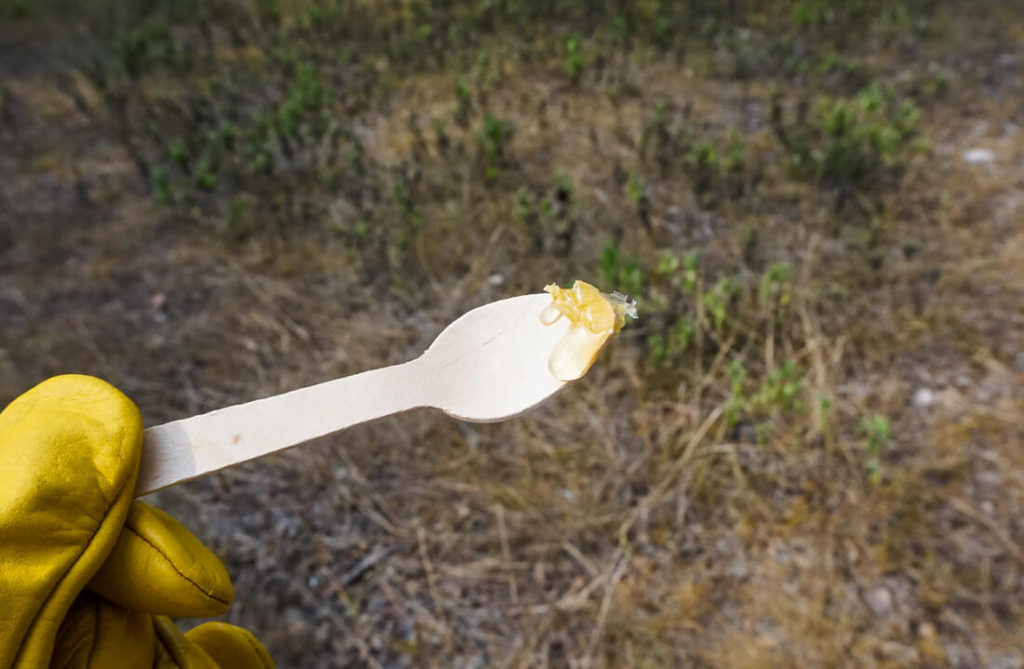
As you may know, colony collapse disorder is a global problem. They don’t know the cause of it, but we do know that a decreasing number of bees is detrimental to our ecology. Bee pollination is critical for crops and they’re responsible for pollinating about 75% of human food plants. That’s why education and preservation are so important. Our food system depends on it!
You can help in several ways.
- Support your local farmers and beekeepers. Two Hives Honey sells their honey at their shop and various retailers around Austin.
- Help your local bees. Grow a flower garden for the bees. Put a shallow container of water nearby for bees to hydrate, but make sure there are surfaces to land on so they don’t drown!
- Keep your land natural. Avoid the chemicals in pesticides and find natural alternatives.
- Spread knowledge!
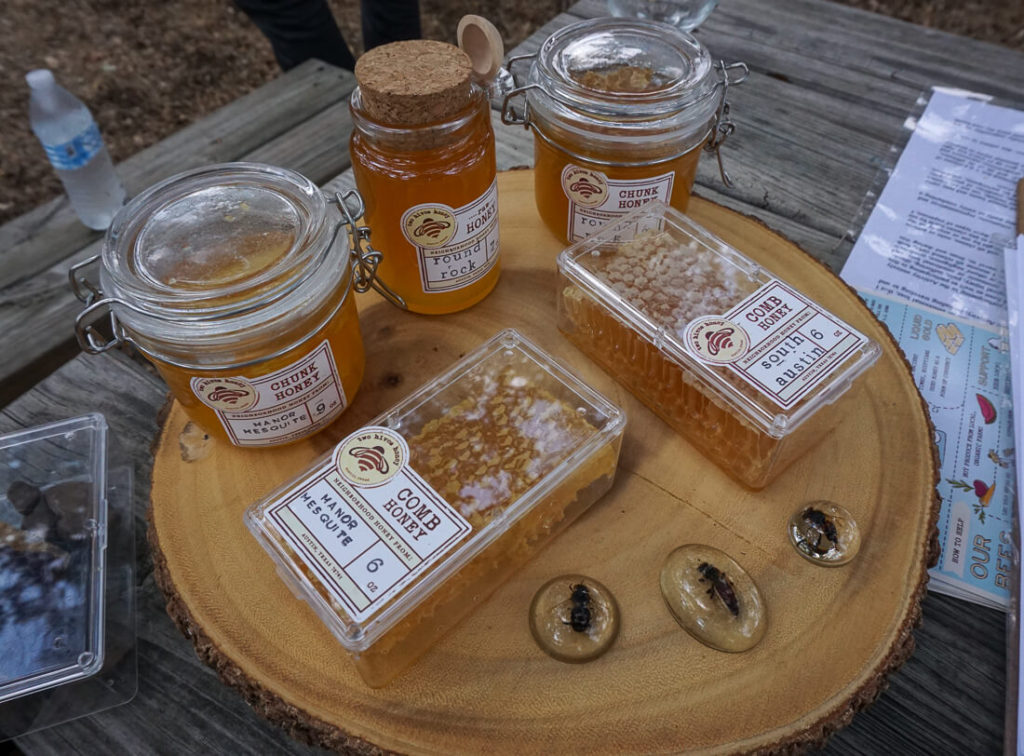
September’s Farm-to-Table Meals
In addition to the honey I bought from Two Hives Honey, here’s what I bought at the farmers market for $31.88:
- Three pattypan squash, one zucchini, one bag of carrots, and one eggplant from Johnson’s Backyard Garden of Austin, TX ($12)
- One bag of spinach from Flintrock Hill Farm from Kingsbury, TX ($4)
- One dozen eggs and about one pound of chicken leg quarters from Humble Rooster Farm of Austin, TX ($15.88)
Here are the resulting meals:
Breakfast: scrambled eggs with spinach
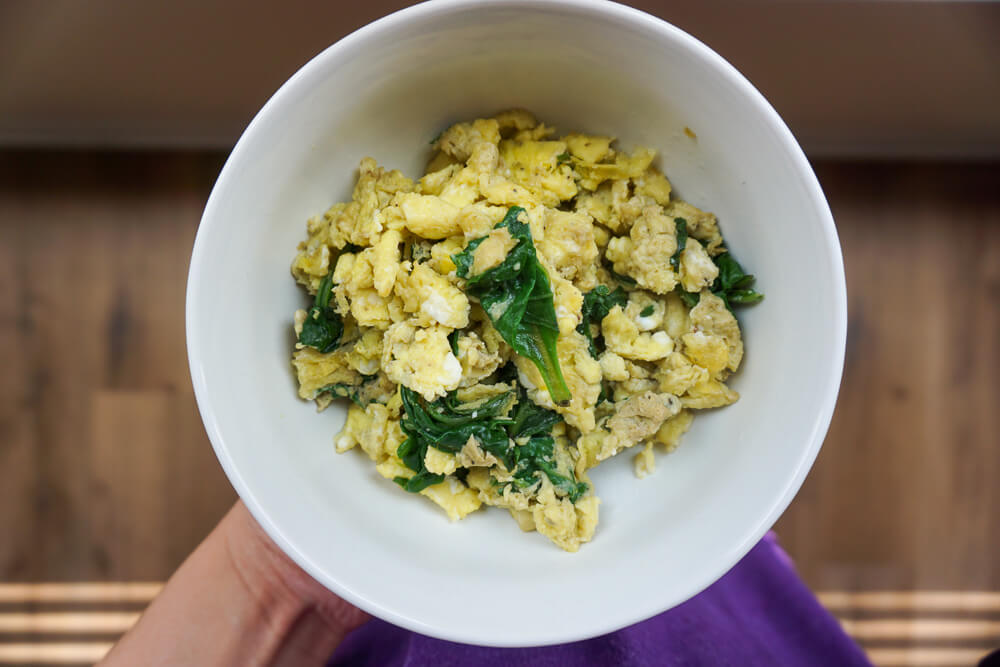
Lunch/Dinner: roasted patty pan squash, grilled chicken and honey glazed carrots
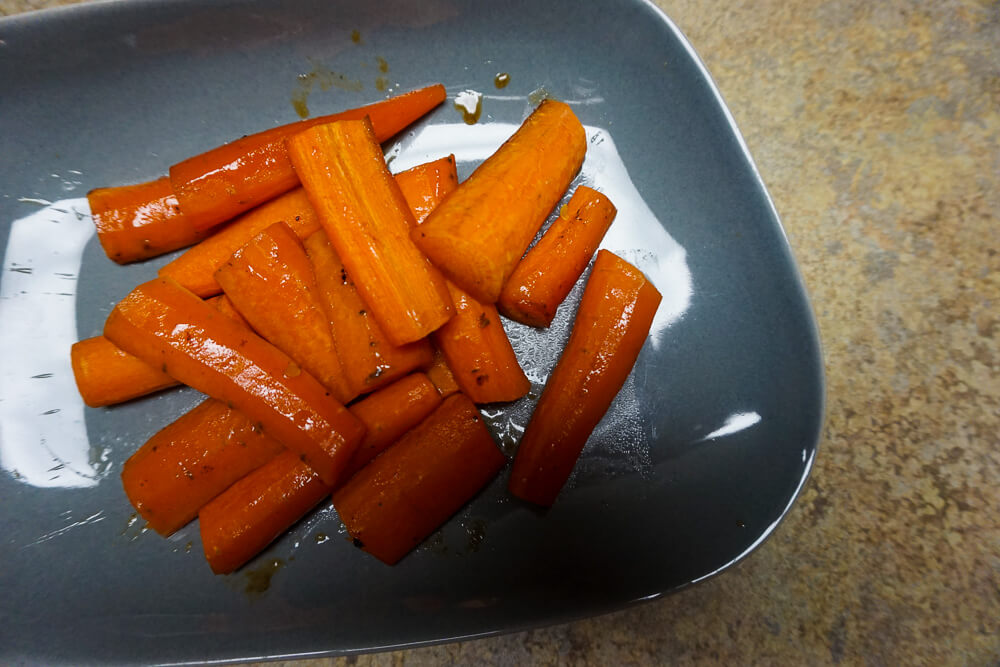
Eat More Honey
How do you eat honey? Here are some suggestions:
- Sweeten your tea
- Glaze meat or veggies for roasting
- Peanut butter and honey sandwiches
- Drizzle over popcorn
- Swap sugar for honey in baked goods
You can get more recipes at Honey.com.
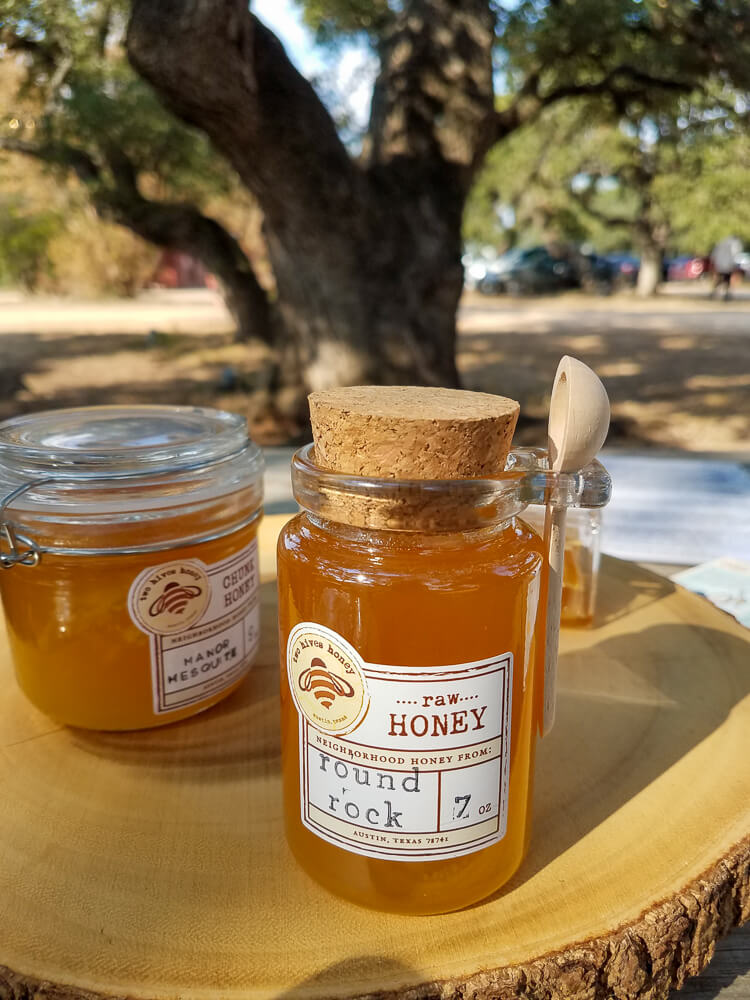
Conclusion
Visiting a local hive is a great way to learn more about bees and get to know your local food system. Plus, you can use the tasty honey for so many things, from food to skincare.
P.S. Curious about my other posts from this challenge so far? See them here.
You can find me on Instagram, Facebook, Twitter, Pinterest, and Bloglovin’. You can also subscribe to the exclusive email list.
